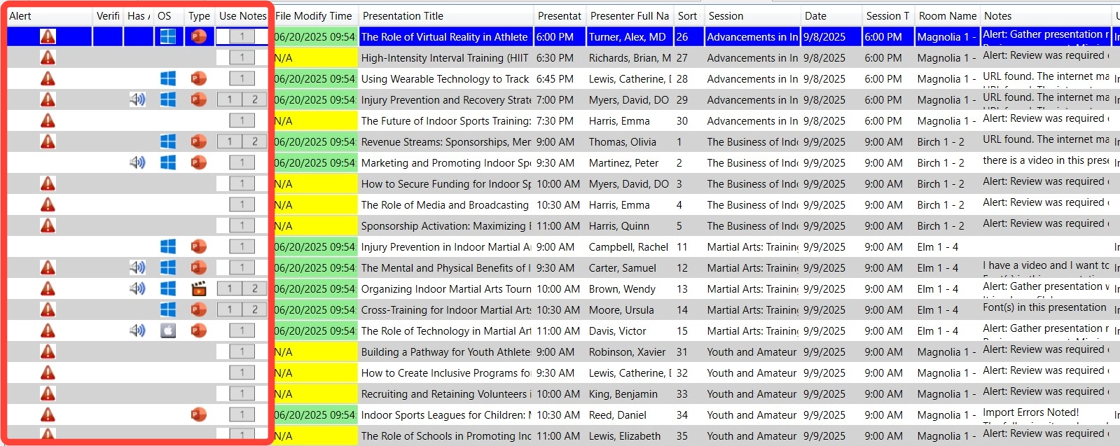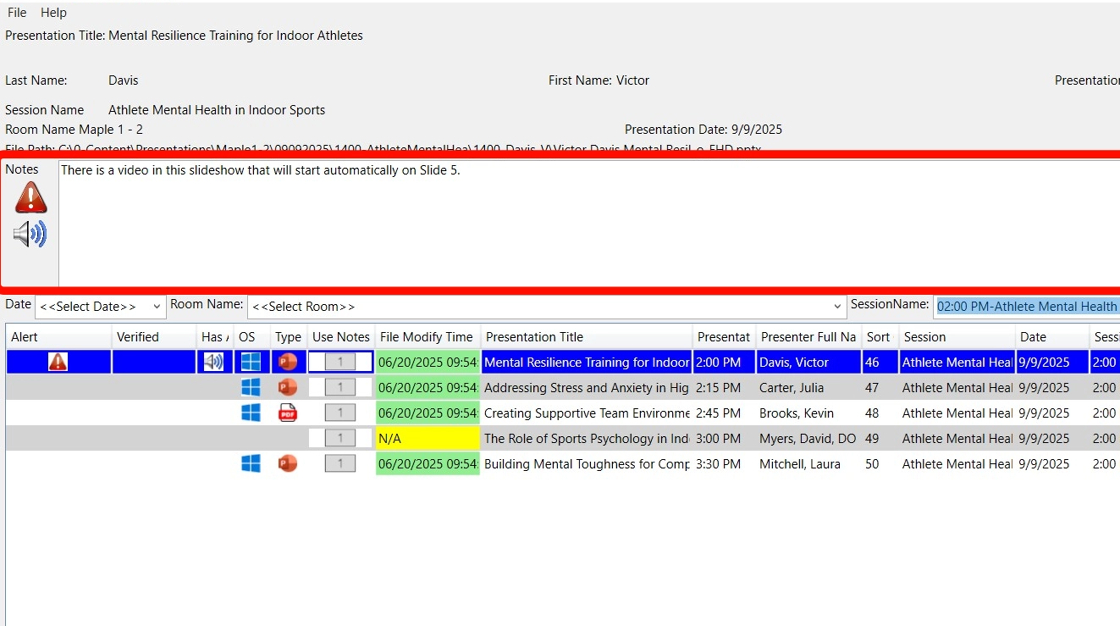Operator View - A Closer Look
Understanding Key Indicators
When viewing ContentXpress in Operator View, you'll notice several key columns near the beginning of the spreadsheet. These provide helpful at-a-glance information about each presentation. In the image below, we’ve highlighted these columns with a red box for reference.

Here’s what each of these indicators means:
-
Alert
If a presentation has an alert symbol in this column, it means there's a note from the presenter or the Speaker Ready Room Manager that the room technician should be aware of. Always check the Notes section for details when an alert is present—it may include important context or special instructions for running that presentation. -
Has Audio
If a speaker icon appears here, the presenter has indicated that audio is included in their presentation. Be prepared for sound playback and, if time allows, test the audio in the room before the session begins. -
OS (Operating System)
This icon shows whether the presenter’s file is intended for a Windows PC or a MacBook. Make sure to use the correct type of laptop for that presentation to avoid compatibility issues. -
Type
This shows what kind of file was uploaded. You might see icons for PowerPoint, Apple Keynote, or PDF, giving you a quick sense of how the presentation will behave when launched. -
Use Notes
If the data in this column shows a gray box with a "1", the presenter does not expect to see their presenter notes (also commonly known as notes view). If the data shows a "1" and "2", they do expect their slides to be presented with notes view enabled. This is important to know ahead of time so you can set up the presentation environment accordingly.
Notes Section
Separate from the “Use Notes” indicator mentioned earlier, this Notes section is a text field specifically used to communicate helpful or critical information to the in-room technician. These notes may be added by either the Speaker Ready Room team or information provided by the presenter.
This is where you'll find:
-
Special instructions for launching or navigating the presentation
-
Warnings about embedded media or specific slide content
-
Any out-of-the-ordinary information that may be helpful for technicians to know ahead of time
While notes are often associated with the Alert indicator, it’s important to know that notes can exist even if no alert is shown. For this reason, technicians should always review the Notes section before launching a presentation—regardless of whether an alert indicator is visible.
In the example image below, the Notes section is highlighted with a red box to help you quickly identify where to look. Taking a few moments to review this field ahead of time can prevent surprises and ensure smoother execution during the session.

